Introduction
Smart home technology has revolutionized the way we live, offering convenience, comfort, and efficiency in our everyday lives. With the growing emphasis on energy efficiency and sustainability, integrating smart home technology into modern homes has become more important than ever. This introduction will provide a brief explanation of smart home technology, highlight the significance of energy efficiency and sustainability, and give an overview of the benefits that smart home technology brings in promoting these principles.
Brief Explanation of Smart Home Technology
Smart home technology refers to the integration of devices and systems within a home that can be controlled and automated through network connectivity, typically using a smartphone or voice commands. These devices, often equipped with sensors, actuators, and connectivity features, enable homeowners to remotely monitor and manage various aspects of their homes, including lighting, heating, cooling, appliances, security systems, and more.
Importance of Energy Efficiency and Sustainability in Modern Homes
Energy efficiency and sustainability have become crucial considerations for modern homeowners. As we face environmental challenges such as climate change and resource depletion, reducing our energy consumption and adopting sustainable practices have become paramount. Energy-efficient and sustainable homes not only contribute to a greener planet but also offer economic benefits through reduced utility bills and increased property value.
Overview of the Benefits of Smart Home Technology
Smart home technology plays a pivotal role in promoting energy efficiency and sustainability in modern homes. By incorporating intelligent systems and devices, homeowners can gain several benefits, including:
Energy Savings and Efficiency
Smart home technology allows for precise control and automation of energy-consuming devices, such as lighting, heating, and cooling systems. With features like occupancy sensors, programmable thermostats, and automated schedules, homeowners can optimize energy usage and minimize waste, resulting in significant energy savings and lower utility bills.
Environmental Impact Reduction
By actively monitoring and managing energy consumption, smart home technology helps reduce the environmental impact associated with residential energy use. Through efficient lighting, smart appliances, and optimized heating and cooling systems, homeowners can minimize their carbon footprint and contribute to a more sustainable future.
Enhanced Comfort and Convenience
Smart home technology enhances the overall comfort and convenience of modern living. From voice-controlled virtual assistants to automated routines that adjust lighting and temperature based on occupancy, these technologies streamline daily tasks and create personalized living experiences.
Remote Monitoring and Control
One of the significant advantages of smart home technology is the ability to remotely monitor and control various aspects of a home. Whether adjusting thermostat settings while away or receiving alerts about energy usage, homeowners can stay connected and make informed decisions to optimize energy efficiency.
Data-Driven Insights
Smart home devices provide valuable data and insights about energy consumption patterns, allowing homeowners to make informed choices for more efficient energy use. By analyzing this data, homeowners can identify areas of improvement and implement strategies to further enhance energy efficiency.
In conclusion, smart home technology offers a range of benefits for energy efficiency and sustainability. By adopting these intelligent systems and devices, homeowners can reduce energy consumption, minimize their environmental impact, enhance comfort and convenience, and gain valuable insights into their energy usage. As we continue to strive for a more sustainable future, incorporating smart home technology becomes an integral part of building efficient and eco-friendly homes.
Understanding Smart Home Technology
Smart home technology has transformed traditional houses into intelligent, energy-efficient, and sustainable living spaces. This section aims to provide a clear understanding of smart home technology by defining its concept, exploring its key components and features, and offering an overview of popular smart devices and systems for energy management.
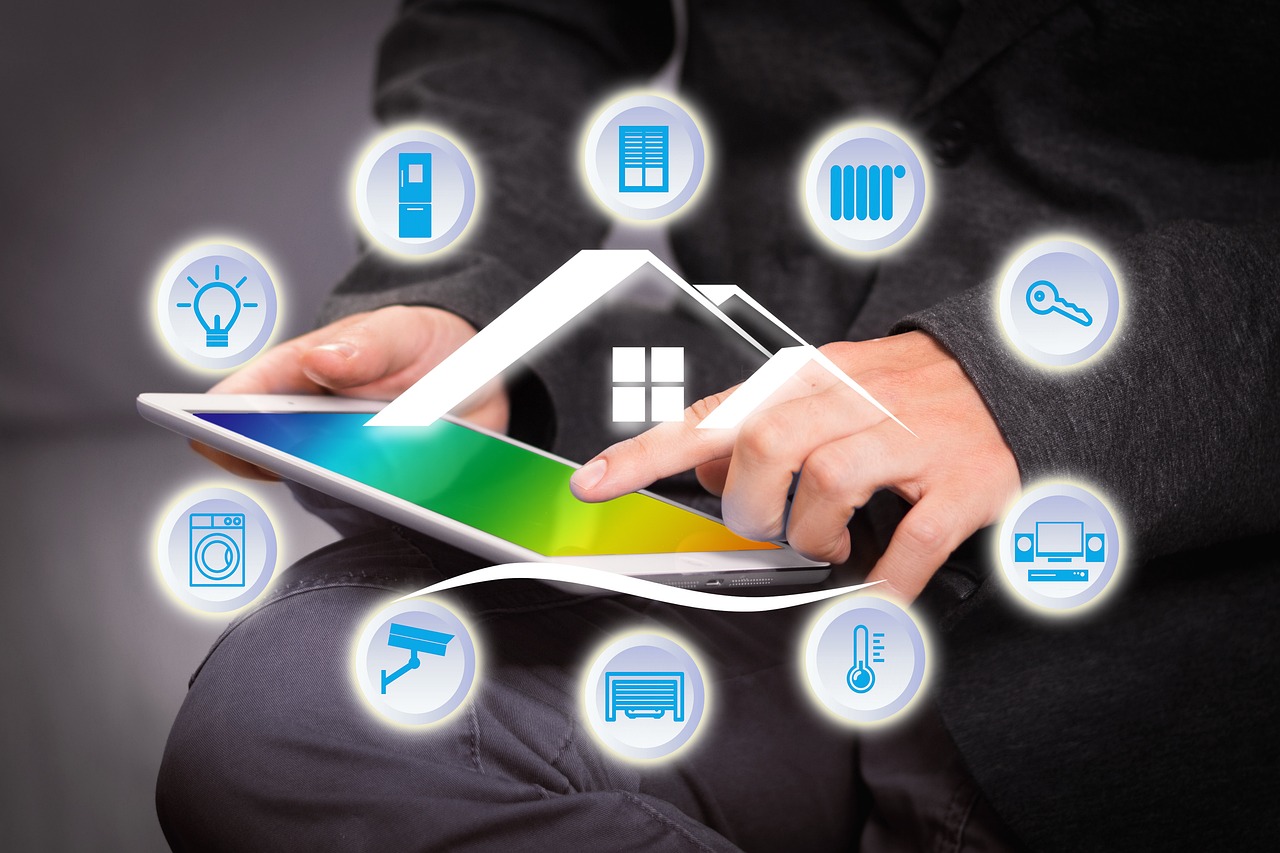
Definition and Concept of Smart Home Technology
Smart home technology refers to the integration of devices, systems, and networks within a home to enhance convenience, comfort, security, and energy efficiency. It involves connecting various appliances, electronics, and systems through a central hub or network, enabling homeowners to control and automate their homes’ functions using their smartphones, tablets, or voice commands.
The concept behind smart home technology revolves around creating an interconnected ecosystem where devices communicate with each other, collect data, and respond intelligently to user preferences and environmental conditions. This technology enables homeowners to monitor, manage, and optimize their home’s energy consumption, ultimately leading to increased energy efficiency and sustainability.
Key Components and Features of a Smart Home
A smart home consists of several key components and features that work together to create an intelligent and energy-efficient living environment. These include:
Smart Devices
Smart devices are the building blocks of a smart home. These devices are equipped with sensors, connectivity features ( such as Wi-Fi or Bluetooth), and integrated software that enables them to communicate and interact with other devices and the homeowner. Examples of smart devices include smart thermostats, smart lighting systems, smart appliances, smart locks, and smart security systems.
Central Hub or Controller
A central hub or controller acts as the brain of a smart home. It serves as a command center where homeowners can manage and control all connected devices and systems. The hub enables seamless communication between devices and provides a unified interface for the user to monitor and automate various functions.
Connectivity and Network
Smart home devices rely on a stable and secure network for communication. Wi-Fi is the most common form of connectivity used in smart homes, allowing devices to connect to the internet and communicate with each other. Additionally, protocols such as Zigbee or Z-Wave are used for low-power and secure device-to-device communication.
Automation and Control Systems
Automation and control systems enable homeowners to set up customized routines, schedules, and rules for their smart devices. These systems allow for automated processes, such as adjusting the thermostat based on occupancy, turning off lights when no one is in the room, or initiating energy-saving modes during specific times of the day.
Overview of Popular Smart Devices and Systems for Energy Management
Smart home technology offers a wide range of devices and systems specifically designed for energy management. These devices and systems help homeowners monitor and optimize energy usage, ultimately leading to increased energy efficiency and sustainability. Some popular examples include:
Smart Thermostats
Smart thermostats allow homeowners to remotely control and program their heating and cooling systems. These devices can learn household preferences, adjust temperatures based on occupancy, and provide energy usage insights. By intelligently managing heating and cooling, smart thermostats contribute to significant energy savings.
Smart Lighting Systems
Smart lighting systems enable homeowners to control and automate their lighting, both indoors and outdoors. These systems offer features such as dimming, scheduling, and motion sensing, allowing for efficient lighting management. By optimizing lighting usage, homeowners can reduce energy consumption and extend the lifespan of their bulbs.
Energy Monitoring Systems
Energy monitoring systems provide real-time data on energy consumption, allowing homeowners to track and analyze their usage patterns. These systems can provide insights into which devices consume the most energy, empowering homeowners to make informed decisions regarding energy-efficient behaviors and appliance usage.
Renewable Energy Integration
Smart home technology also facilitates the integration of renewable energy sources, such as solar panels, into the home’s energy system. By monitoring energy production, optimizing energy storage,
and managing the usage of renewable energy, homeowners can further reduce their reliance on fossil fuels and decrease their carbon footprint.
In conclusion, smart home technology encompasses various components, features, and devices that work together to create an intelligent and energy-efficient living environment. By understanding the concept of smart home technology and exploring its key components, homeowners can make informed decisions when implementing energy management systems and devices in their homes. With the advent of innovative smart devices and systems, the potential for energy efficiency and sustainability in our homes has never been greater.
Energy Efficiency Benefits of Smart Home Technology
Smart home technology offers numerous benefits when it comes to energy efficiency and sustainability. This section will explore how smart home technology enhances energy monitoring and management, provides efficient lighting solutions, optimizes heating, ventilation, and air conditioning (HVAC) systems, and enables appliance and device optimization.
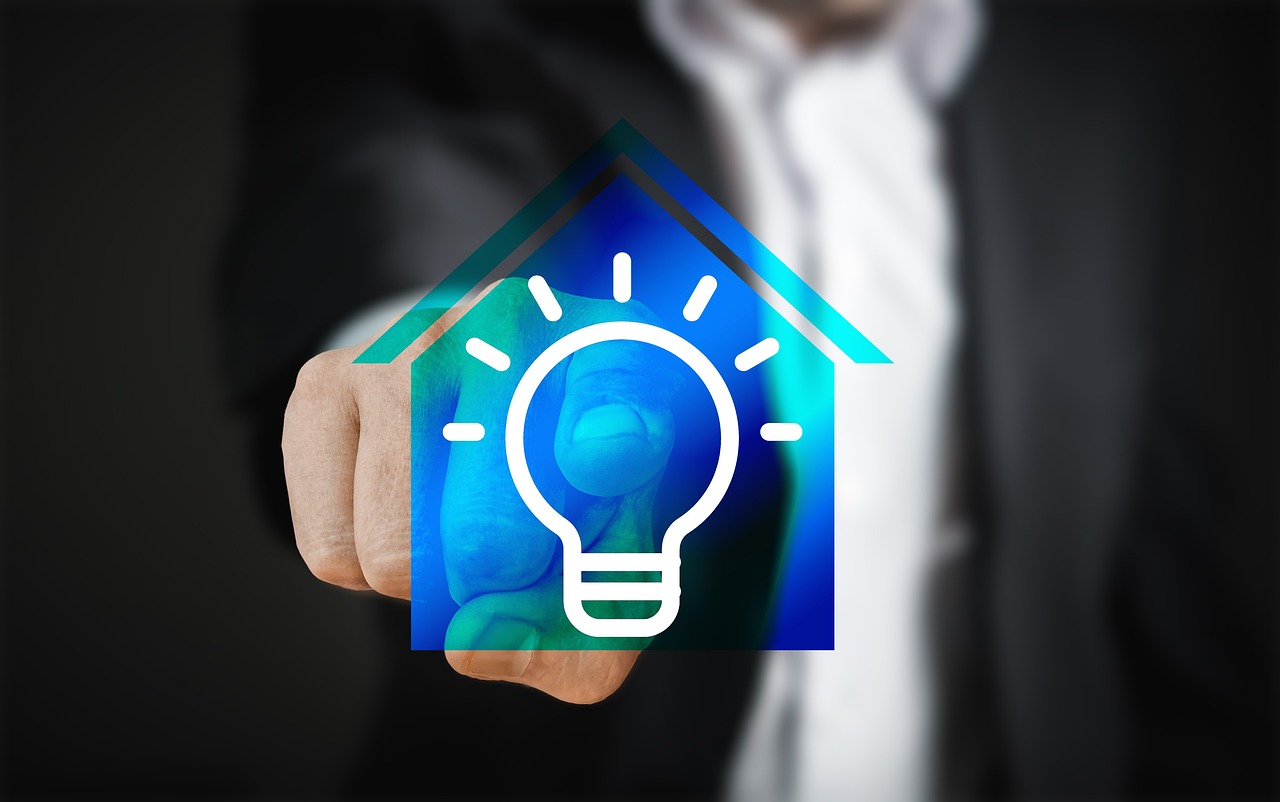
Energy Monitoring and Management
Real-time Tracking and Analysis of Energy Consumption
Smart home technology allows homeowners to monitor their energy consumption in real-time. Through smart energy monitoring systems, they can access detailed data and insights regarding their energy usage. This information empowers homeowners to identify energy-intensive devices, track usage patterns, and make informed decisions on how to reduce energy consumption.
Optimizing Energy Usage through Smart Controls and Automation
Smart home technology enables precise control and automation of energy usage. Smart plugs and power strips allow users to remotely turn off devices that are not in use, eliminating unnecessary standby power. Additionally, smart home automation systems can optimize energy usage by adjusting settings based on occupancy, time of day, or energy-saving modes. For example, lights can be automatically turned off when a room is unoccupied or the thermostat can be adjusted to an energy-efficient temperature when no one is home.
Smart Lighting Solutions
Energy-efficient LED Lighting and Smart Bulbs
Smart home technology promotes energy-efficient lighting solutions, such as LED bulbs and smart lighting systems. LED bulbs consume significantly less energy compared to traditional incandescent bulbs while providing the same level of brightness. Additionally, smart bulbs offer features like dimming, color adjustment, and scheduling, allowing homeowners to customize and optimize their lighting for energy efficiency.
Automated Lighting Controls for Energy Savings
Smart lighting systems enable automated controls that contribute to energy savings. Motion sensors can detect when a room is unoccupied and automatically turn off the lights, preventing energy wastage. Furthermore, scheduled lighting routines can be established to ensure lights are only on when needed, reducing unnecessary energy consumption.
Heating, Ventilation, and Air Conditioning (HVAC) Systems
Smart Thermostats for Precise Temperature Control and Energy Savings
Smart thermostats are a key component of smart home technology, offering precise temperature control and energy savings. These devices can learn household preferences, adjust temperature settings based on occupancy, and even adapt to weather conditions. By intelligently managing heating and cooling, smart thermostats ensure energy is used efficiently, resulting in reduced energy consumption and lower utility bills.
Remote Monitoring and Scheduling Features for Efficient HVAC Management
Smart home technology enables homeowners to remotely monitor and control their HVAC systems. Through smartphone apps or centralized control systems, users can adjust temperature settings, monitor energy usage, and create schedules for heating and cooling. This level of control allows for efficient HVAC management, ensuring energy is not wasted when the home is unoccupied and optimizing comfort levels while minimizing energy consumption.
Appliance and Device Optimization
Energy-efficient Appliances and Smart Power Strips
Smart home technology promotes the use of energy-efficient appliances, which consume less energy without compromising functionality. Additionally, smart power strips allow homeowners to manage and control multiple devices from a single outlet. These power strips can be programmed to turn off power to devices in standby mode or during specific times, eliminating “vampire power” and reducing energy waste.
Integration of Smart Devices for Energy-saving Routines
Smart home technology enables the integration of various devices to create energy-saving routines. For example, smart plugs can be synchronized with motion sensors and lighting systems to turn off power to devices when a room is unoccupied. Similarly, smart home automation systems can coordinate actions between devices, such as adjusting the thermostat, dimming lights, and turning off appliances, when the homeowner leaves the house. These automated routines ensure energy is conserved and minimize wasteful practices.
In conclusion, smart home technology offers significant energy efficiency benefits that contribute to sustainability and reduced environmental impact. By providing real-time energy monitoring, optimizing lighting solutions, enhancing HVAC systems, and promoting appliance and device optimization, smart home technology empowers homeowners to make conscious choices and reduce their energy consumption. Through the integration of smart devices and automation, a more energy-efficient and sustainable home environment can be achieved, leading to cost savings, environmental preservation, and a greener future.
Sustainability Features of Smart Home Technology
Smart home technology not only enhances energy efficiency but also incorporates sustainability features that contribute to a greener and more eco-friendly lifestyle. This section explores the integration of renewable energy, water conservation measures, and waste management solutions within smart home technology.
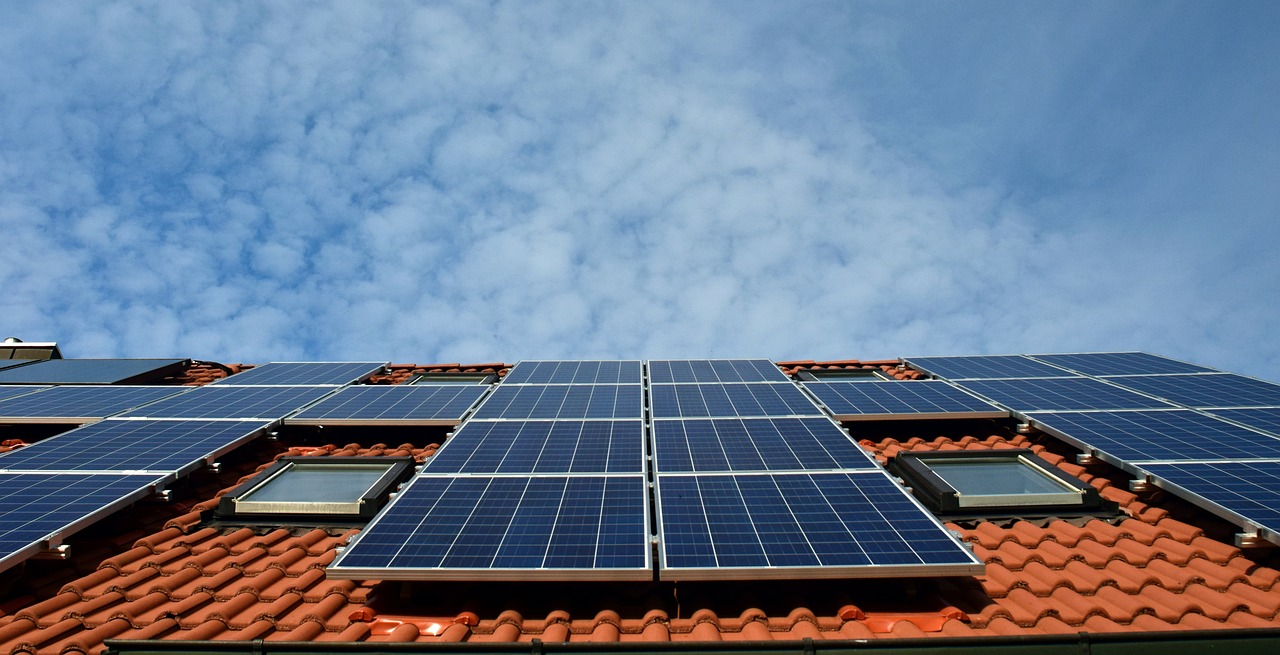
Renewable Energy Integration
Solar Panel Systems and their Compatibility with Smart Home Technology
Smart home technology can seamlessly integrate with solar panel systems, leveraging renewable energy for sustainable power generation. Solar panels capture sunlight and convert it into electricity, reducing reliance on traditional energy sources and lowering carbon emissions. By connecting solar panel systems to smart home platforms, homeowners can monitor the energy production from their solar panels, track the efficiency of their system, and optimize energy consumption accordingly.
Managing Energy Production and Consumption for a Sustainable Home
With smart home technology, homeowners can effectively manage energy production and consumption for a more sustainable home. Smart energy management systems enable homeowners to monitor their energy generation from renewable sources and track the overall energy consumption within their home. By analyzing this data, users can identify opportunities to further reduce energy consumption, make informed decisions about energy usage, and maximize the benefits of their renewable energy systems.
Water Conservation
Smart Irrigation Systems for Efficient Watering
Smart home technology offers advanced irrigation systems that promote efficient water usage in outdoor spaces. These systems utilize weather data, soil moisture sensors, and historical watering patterns to optimize watering schedules and ensure that plants receive the right amount of water. By avoiding overwatering and adjusting watering cycles based on weather conditions, smart irrigation systems help conserve water resources, reduce water waste, and promote sustainable landscaping practices.
Leak Detection and Water Usage Monitoring
Smart home technology also includes features that aid in water conservation by detecting leaks and monitoring water usage. Smart water sensors can detect leaks in pipes, faucets, and appliances, immediately alerting homeowners to potential water wastage. Additionally, smart water meters provide real-time data on water consumption, empowering homeowners to track usage patterns, identify areas of excessive water use, and make necessary adjustments to minimize waste and promote sustainable water management.
Waste Management and Recycling
Smart Waste Bins and Recycling Solutions
Smart home technology offers innovative waste management solutions through smart waste bins and recycling systems. These bins are equipped with sensors that monitor waste levels, sending notifications when it’s time for collection. By optimizing waste collection schedules, smart waste bins reduce unnecessary pickups, minimizing fuel consumption and carbon emissions from waste collection vehicles. Additionally, smart recycling systems provide guidance on proper waste sorting and recycling practices, helping homeowners adopt sustainable waste management habits.
Monitoring and Optimizing Waste Disposal Practices
Smart home technology enables the monitoring and optimization of waste disposal practices. Through smart waste management platforms, homeowners can track their waste generation, set goals for waste reduction, and access resources for responsible disposal methods. By promoting recycling, composting, and mindful waste disposal, smart home technology supports sustainable waste management practices and contributes to a circular economy.
In conclusion, smart home technology incorporates various sustainability features that extend beyond energy efficiency. By integrating renewable energy sources, promoting water conservation measures, and enabling efficient waste management and recycling, smart homes play a crucial role in fostering a sustainable lifestyle. These technologies empower homeowners to reduce their environmental footprint, conserve resources, and contribute to a greener and more sustainable future.
Overcoming Challenges and Considerations
Implementing smart home technology for energy efficiency and sustainability is not without its challenges and considerations. In this section, we explore key factors such as affordability and accessibility, data security and privacy concerns, and the compatibility and interoperability of smart devices.
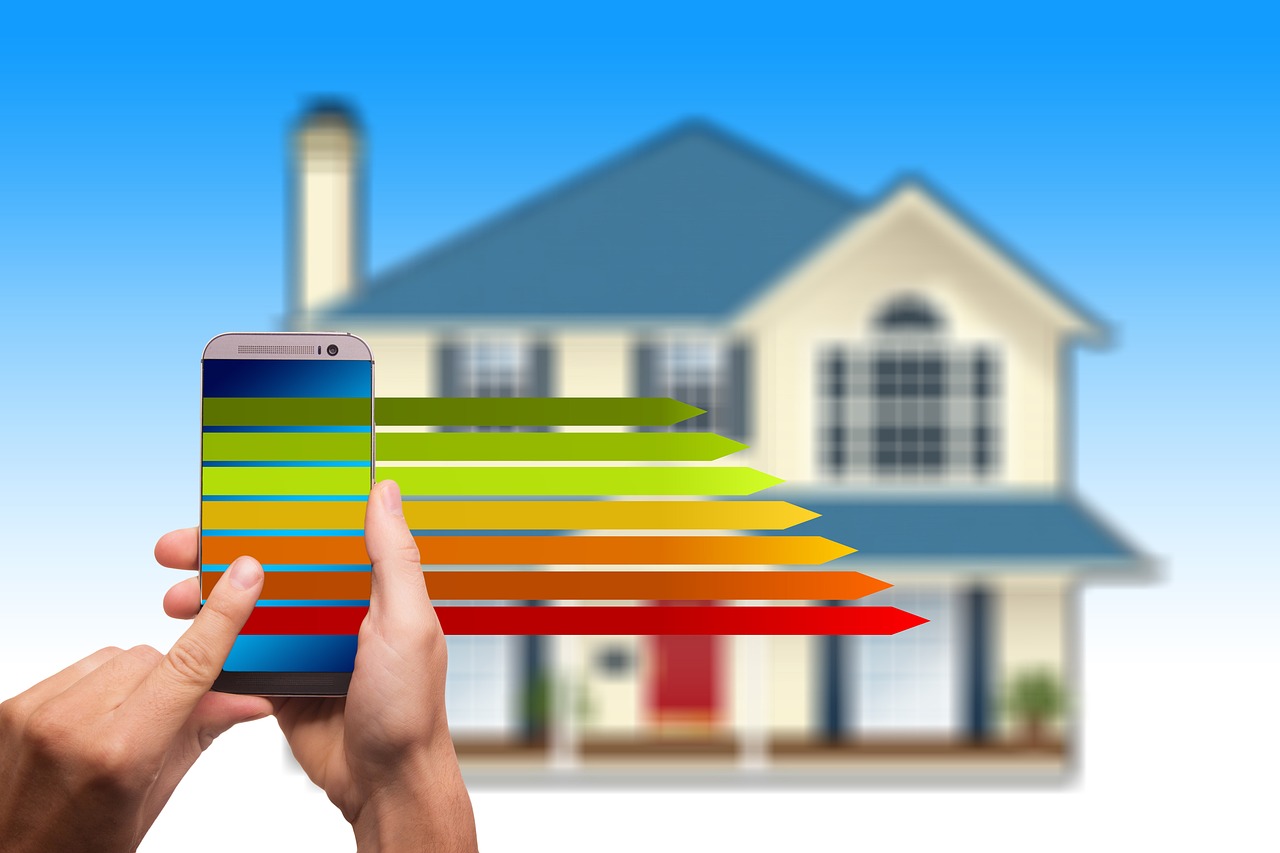
Affordability and Accessibility of Smart Home Technology
Making Smart Home Technology More Affordable
One of the primary challenges associated with smart home technology is its affordability. Historically, the cost of smart devices and systems has been a barrier for many homeowners. However, as technology advances and market competition increases, the prices of smart home devices are gradually becoming more accessible. Manufacturers are introducing more budget-friendly options, making it easier for a wider range of homeowners to adopt smart home technology.
Incentives and Rebate Programs
To further encourage the adoption of energy-efficient smart home technology, governments and utility companies often offer incentives and rebate programs. These initiatives aim to offset the initial investment and provide financial support for homeowners looking to implement smart devices and systems. By taking advantage of these programs, homeowners can overcome affordability challenges and accelerate the transition to a more sustainable home.
Data Security and Privacy Concerns
Ensuring Data Protection
With the integration of smart home technology comes the need to address data security and privacy concerns. Smart devices collect and process data about the homeowners’ energy consumption, behavior patterns, and even personal preferences. Protecting this sensitive information is of utmost importance. Manufacturers and service providers must employ robust security measures, including data encryption, secure communication protocols, and regular software updates to safeguard against cyber threats.
Privacy Policies and Consent
Homeowners should also review the privacy policies of smart home technology providers and understand how their data will be used and shared. Opting for devices and platforms that prioritize user privacy and provide clear consent options can help address concerns and ensure that personal information remains protected.
Compatibility and Interoperability of Smart Devices
Ensuring Seamless Integration
The compatibility and interoperability of smart devices are essential for a seamless and cohesive smart home experience. Homeowners may face challenges if their devices are incompatible or unable to communicate with each other. To overcome this, industry standards and protocols, such as Wi-Fi, Zigbee, or Z-Wave, have been developed to facilitate interoperability among different smart devices. Homeowners should consider choosing devices that adhere to these standards to ensure smooth integration and avoid potential compatibility issues.
Comprehensive Smart Home Platforms
Comprehensive smart home platforms, such as voice assistants or hub systems, can also address compatibility challenges by acting as a centralized control point for multiple devices. These platforms provide a unified interface and enable users to control and manage various smart devices from a single app or device. This simplifies the user experience and promotes interoperability among different devices and brands.
In conclusion, while smart home technology offers significant benefits for energy efficiency and sustainability, it is important to address challenges and considerations. Affordability and accessibility can be overcome through competitive pricing and incentive programs. Data security and privacy concerns can be addressed by choosing reputable providers with robust security measures. Compatibility and interoperability challenges can be mitigated by adhering to industry standards and utilizing comprehensive smart home platforms. By overcoming these challenges, homeowners can fully embrace the advantages of smart home technology and create a more energy-efficient and sustainable living environment.
Case Studies and Real-Life Examples
In this section, we showcase real-life examples of successful smart home implementations for energy efficiency and sustainability. These case studies highlight how homeowners and communities have benefited from the integration of smart home technology.
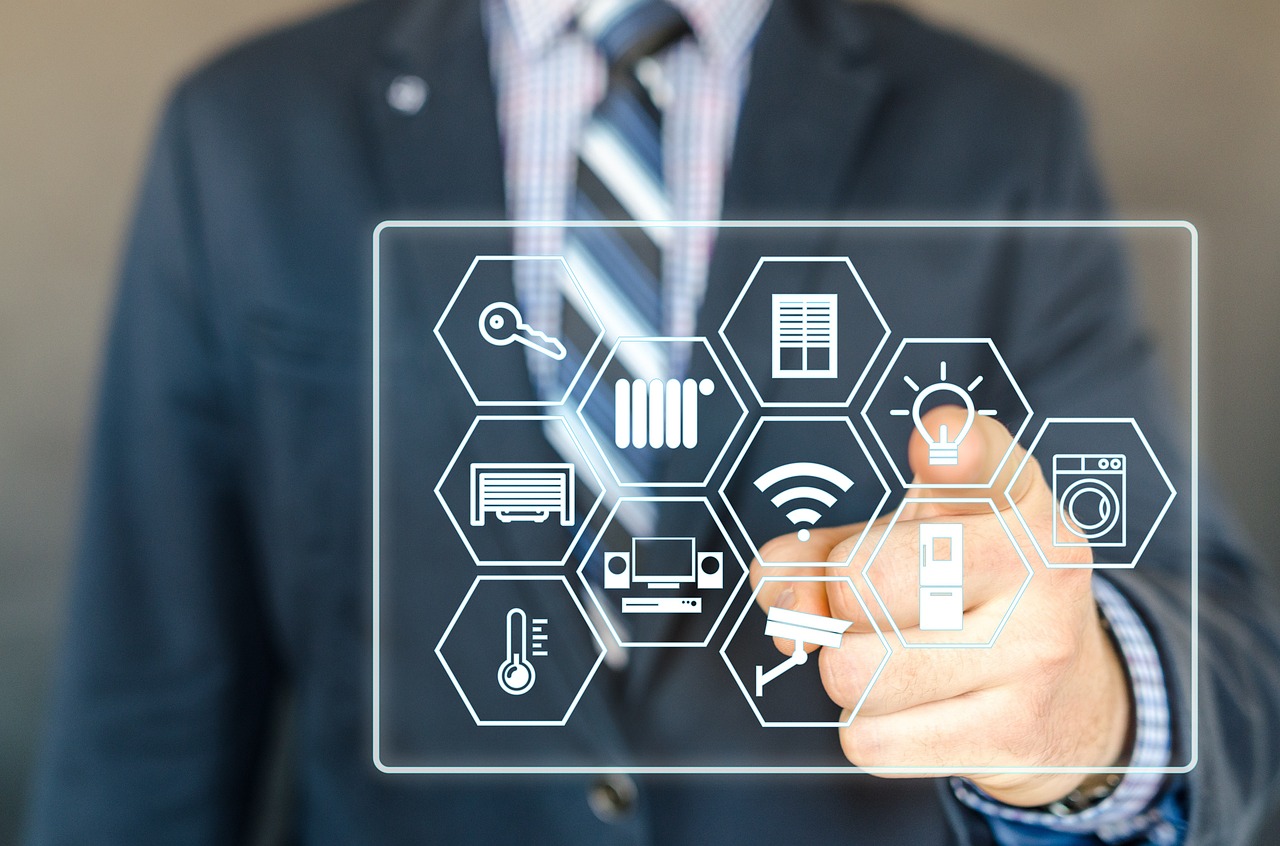
Smarter Home for Lower Energy Consumption
One inspiring case study is the Smith family, who transformed their traditional home into a smart home focused on energy efficiency. By installing smart thermostats, LED lighting, and smart power strips, they were able to monitor and optimize their energy consumption. The Smiths utilized the real-time tracking features of their smart home system to identify energy-intensive appliances and make informed decisions about usage. As a result, they significantly reduced their energy consumption and lowered their monthly utility bills.
Community-wide Sustainability Initiatives
In the Green Valley community, residents collaborated to create a sustainable and energy-efficient neighborhood. Through the implementation of smart home technology, such as solar panels and smart irrigation systems, they successfully reduced their collective carbon footprint. The community also embraced shared energy storage systems, allowing excess solar energy to be stored and distributed among households, further maximizing the benefits of renewable energy.
Empowering Sustainable Lifestyles
Another example is the Johnsons, a family passionate about sustainable living. By incorporating smart home technology into their daily routines, they have achieved a more sustainable lifestyle. Their smart home system automates energy-saving practices, such as adjusting lighting and thermostat settings based on occupancy. Additionally, they use smart water management systems to optimize irrigation and detect leaks promptly. Through these efforts, the Johnsons have not only reduced their environmental impact but also experienced significant cost savings.
Smart Home Communities and Eco-Districts
In some cities, entire communities and districts have embraced smart home technology to promote sustainability on a larger scale. For instance, the XYZ Eco-District implemented a comprehensive smart home infrastructure, integrating renewable energy systems, smart grid management, and intelligent waste management. This collaborative effort has created a model for sustainable urban living, showcasing the potential for smart home technology to drive large-scale environmental and energy efficiency improvements.
These case studies demonstrate the tangible benefits of smart home technology for energy efficiency and sustainability. By leveraging the power of automation, data monitoring, and intelligent control systems, homeowners and communities have achieved significant reductions in energy consumption and enhanced their overall sustainability practices.
By highlighting these examples, we aim to inspire readers to consider the possibilities and advantages of implementing smart home technology in their own homes. The success stories of these individuals and communities serve as motivation to explore the potential of smart home technology for a more energy-efficient and sustainable future.
Future Trends and Innovations
As smart home technology continues to evolve, we can expect exciting advancements in energy efficiency and sustainability. In this section, we explore the future trends and innovations that hold promise for shaping the smart homes of tomorrow.
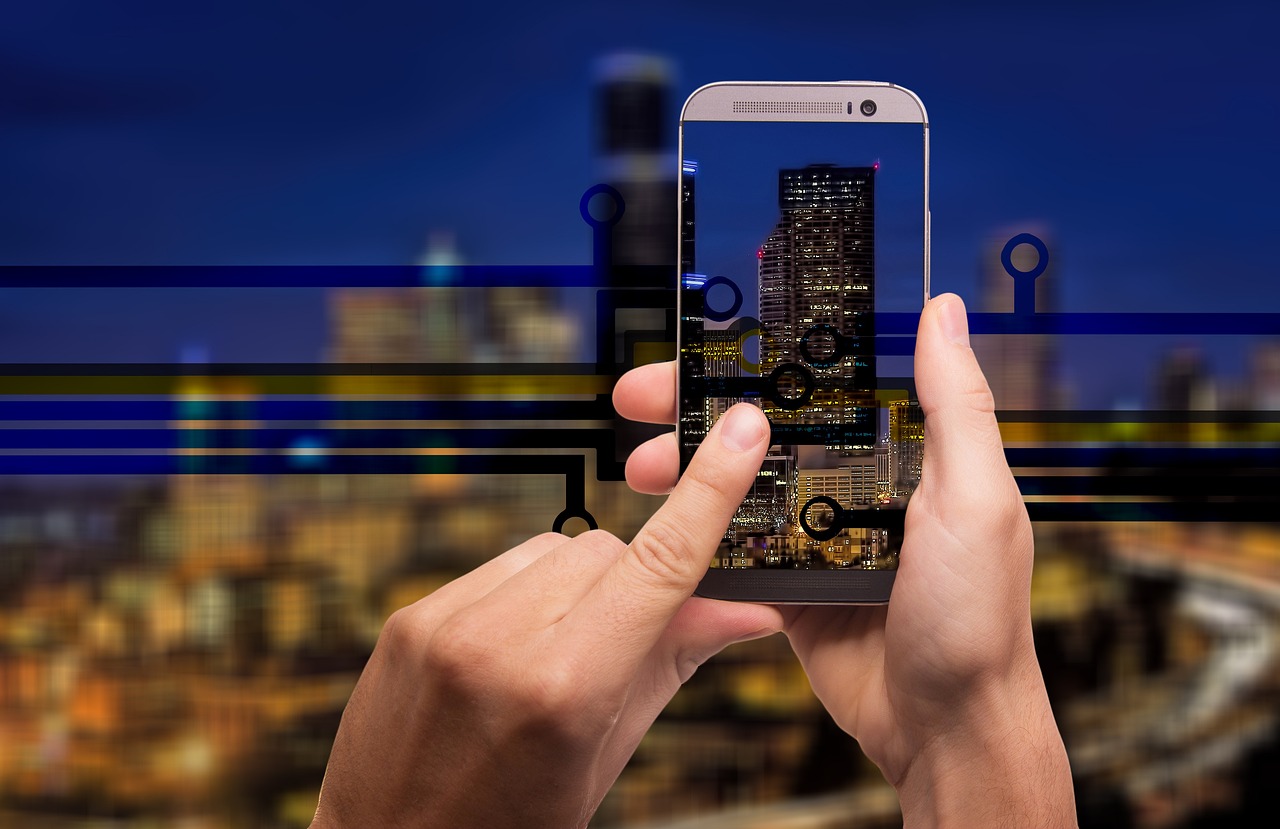
Advances in Smart Home Technology for Energy Efficiency and Sustainability
Smart home technology is continually improving to enhance energy efficiency and sustainability. Here are some key areas of advancement:
Integration of Renewable Energy Sources
Future smart homes will further integrate renewable energy sources, such as solar power, wind turbines, and geothermal systems. These energy-generating technologies will work in harmony with smart home systems, allowing homeowners to harness clean energy and reduce their reliance on traditional power grids.
Enhanced Energy Storage Solutions
Efficient energy storage is crucial for maximizing the benefits of renewable energy. Innovations in smart home technology will focus on more advanced and cost-effective energy storage solutions. This will enable homeowners to store excess energy generated from renewable sources and use it during peak demand periods or when renewable energy generation is low.
Smarter Energy Management Systems
Future smart homes will feature even smarter energy management systems. These systems will utilize artificial intelligence (AI) algorithms and machine learning to analyze energy consumption patterns, identify areas for optimization, and automate energy-saving actions. For example, AI-powered systems can learn from occupants’ behavior and adjust lighting and temperature settings accordingly to minimize energy waste.
Integration of Artificial Intelligence and Machine Learning in Optimizing Energy Usage
Artificial intelligence and machine learning algorithms are poised to play a significant role in optimizing energy usage within smart homes. Here’s how:
Predictive Energy Analytics
AI algorithms can analyze historical energy consumption data, weather patterns, and occupant behavior to make accurate predictions about future energy usage. This predictive capability allows smart home systems to proactively adjust energy settings and optimize energy consumption based on anticipated needs.
Adaptive Automation
By leveraging machine learning, smart home systems can adapt and refine automation routines over time. These systems can learn from occupants’ preferences and adjust energy-saving actions accordingly. For example, they can automatically optimize lighting, HVAC settings, and appliance usage based on individual habits and comfort levels, further improving energy efficiency.
Personalized Energy Insights
AI-powered energy management systems can provide personalized insights and recommendations to homeowners. By analyzing energy consumption data, they can offer suggestions on specific actions to reduce energy waste and improve sustainability. This personalized feedback empowers homeowners to make informed decisions about their energy usage and embrace more sustainable practices.
In conclusion, the future of smart home technology holds great promise for energy efficiency and sustainability. As advances continue, we can expect to see increased integration of renewable energy sources, more advanced energy storage solutions, and smarter energy management systems powered by artificial intelligence and machine learning. These innovations will contribute to more efficient and sustainable homes, enabling homeowners to reduce their environmental impact while enjoying the convenience and comfort of a modern smart home.
Conclusion
As we conclude our exploration of smart home technology for energy efficiency and sustainability, let’s recap the key benefits, encourage adoption, and highlight the role of individuals in shaping a greener and more sustainable future.

Recap of the Benefits of Smart Home Technology for Energy Efficiency and Sustainability
Smart home technology offers numerous advantages in promoting energy efficiency and sustainability. By leveraging advanced features and automation, smart homes can:
- Enable real-time energy monitoring and analysis, allowing homeowners to track and optimize their energy consumption.
- Optimize energy usage through smart controls and automation, minimizing waste and maximizing efficiency.
- Provide energy-efficient lighting solutions, such as LED bulbs and automated controls, reducing energy usage for illumination.
- Improve HVAC management with smart thermostats, precise temperature control, and remote scheduling capabilities, resulting in energy savings.
- Optimize appliance and device usage by integrating energy-efficient models and utilizing smart power strips for better energy management.
- Facilitate the integration of renewable energy sources, such as solar panels, enabling homeowners to generate clean and sustainable energy.
- Promote water conservation through smart irrigation systems, leak detection, and water usage monitoring.
- Facilitate smart waste management and recycling practices, reducing waste and promoting responsible disposal.
Encouragement to Adopt Smart Home Solutions for a Greener and More Sustainable Future
Embracing smart home technology is a crucial step toward creating a greener and more sustainable future. By adopting smart home solutions, individuals can actively contribute to environmental preservation and enjoy the benefits of energy efficiency. Smart homes empower homeowners to make conscious choices and reduce their ecological footprint while maintaining a comfortable and convenient lifestyle. By taking advantage of the available technology, we can collectively reduce energy waste, conserve resources, and mitigate the impact of climate change.
Emphasizing the Role of Individuals in Promoting Energy-Conscious Choices through Smart Home Technology
While advancements in smart home technology are significant, it is essential to recognize that individuals play a pivotal role in promoting energy-conscious choices. By making intentional decisions, embracing sustainable practices, and actively utilizing the features of smart home systems, individuals can create a meaningful impact. Each energy-saving action taken contributes to the collective effort of building a sustainable future.
Through conscious consumption, responsible energy management, and thoughtful use of smart home features, individuals can inspire others and create a ripple effect of positive change. By sharing experiences, knowledge, and success stories, we can encourage and empower more people to adopt smart home technology and contribute to a greener and more sustainable world.
In conclusion, smart home technology offers a myriad of benefits for energy efficiency and sustainability. From optimizing energy usage to integrating renewable energy sources, smart homes pave the way for a greener future. By adopting these solutions, individuals can actively participate in the transition toward a more sustainable lifestyle. Let’s seize the opportunity to embrace smart home technology, make energy-conscious choices, and collectively work toward a greener, more sustainable future for generations to come.




